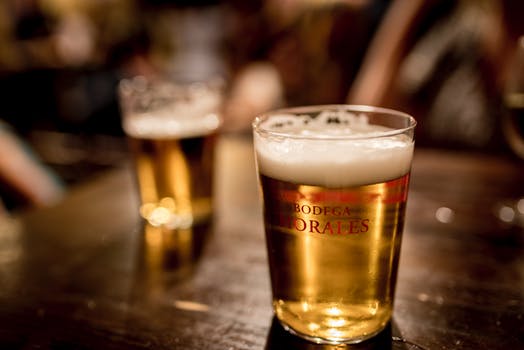Britain is a nation of sports lovers. Football, rugby, cricket, boxing, tennis, F1, golf - you name it and you’ll never be too far from a fan. Even sports that aren’t widely adopted here such as American football have amassed a large following in recent years.
More often than not, big sporting events equal a trip to the pub with friends and family. That way, fans can celebrate or commiserate together and where better to do it than at the local pub?

For operators, these sporting events are a big opportunity to attract some extra revenue. For those of you who aren’t sports fans or have never use your facilities to host a screening of a sporting event, the thought of attracting masses of sports fans to your pub or bar can be quite daunting. To help, we’ve created this guide that will help you to plan and prepare your bar or pub sporting event and advise you on the biggest sporting events to look out for.
Different types of sporting events...
Annual events:
• Super Bowl
• FA Cup final
• Wimbledon
• Six Nations
• The Masters
Special events:
• Football World Cup
• Rugby World Cup
• Euros
• The Ashes
• Olympics
• Boxing
Seasonal events:
• Premier League
• Champions League
• Premiership Rugby
How you prepare for each type of event will vary. It would be strange for your venue to go mad and over-promote a generic Premier League match. It’s the one-off events like the Super Bowl or FA Cup final where it is expected that you push the boat out in terms of promotions and offerings.
Keep an eye on the successes of your local teams too. Should your local football team reach a final in their respective competition, you want to make sure you the fans know they can watch it in your establishment alongside other fans.
Creating a detailed plan

Organising a showing of a large sporting event is no easy task, so having a detailed plan in place will make sure everything runs as you envisage. For each sporting event, your plan should include promotions, expected capacity, whether it should be a ticketed event, type of furniture layout, number of staff needed and the publicity required.
The details of your plan will ultimately depend on the size of the sport‘s following, the amount of hype surrounding the event as well as the date and time it is happening. For example, to celebrate Wimbledon, your pub or bar might have an offer on Pimms and strawberries. Wimbledon is a very family-orientated tournament so the types of activities and offerings should attract all ages.
Comparatively, the Super Bowl is an annual event that runs in the early hours of the morning in the UK so the demographic for such an event is different. There are endless amounts of ideas to americanise interiors and the draw of the Super Bowl is more than just the match. Themed food and drink and a lively atmosphere is what operators must strive for to make a success of the Super Bowl.
Do you have a suitable event location?
It goes without saying that pubs and bars need a suitable amount of television screens to cope with the amount of punters expected. TV screens could be dotted around the venue or there could be a large projector screen for customers to base themselves around. There are benefits with each and the decision for either will be much based on the layout of your bar or pub.
Equally important as being able to see a screen is having enough room for customers to sit, stand and put down their drinks.
Depending on the time of the year, the options available to you may be different. For late spring and summer sporting events, you might be tempted to have a large screen projector placed in your outdoor space for viewers to gather around. Summer sporting events where this would work particularly well include Wimbledon, the World Cups and The Ashes, when it is held in England.
Remember that not all of your customers will be interested in the sporting action. They might have even come to your pub or bar to escape from the event. If your bar, pub or club does have a separate room, consider using this space to cover other visitors’ needs. It’s always wise to have at least one area where people can talk and drink in peace.
Sporting events furniture layout
.jpg)
To plan how you want to lay out the furniture in your pub or bar, you need to think about the demographic you are targeting for the sporting event in question.
Owners can influence the atmosphere and type of clientele simply by the way furniture is laid out. Rows of stackable chairs with no tables and standing room at the back will create a more boisterous and rowdy environment as customers’ sole attention will be on the screen and they’ll all be watching it together. By setting out chairs with tables separately, the atmosphere will be more sedate as customers will be watching in their own groups instead of a collective.
If outdoor space is available, it provides a more flexible approach. Customers can fill space as they choose with stackable chairs, picnic blankets, pub benches or sitting or standing on the grass.
Whatever layout you choose, the most important thing is ensuring your customers are comfortable. Some sporting events last hours, so the comfort of the environment is paramount to ensure that enough people stay for the duration. Having sufficient seating is often the root of the problem. We find that sports bars and pubs who host sporting events regularly prefer to opt for space saving or stackable bar tables and stools when adding additional furniture to a bar area or outside seating area to accommodate extra guests.
Upcoming sporting events
2018 is set to be a great year for sports fans, with the 2018 FIFA World Cup the biggest event on the calendar.
The World Cup this year takes place in Russia from June 14th to July 15th. England is the only home nation to make it to the competition and as always there will be much anticipation about their matches. The matches that operators need to focus on are all the England games, the opening fixture, the semi-finals and the final. Read our guide pub guide to the 2018 world cup.
Sporting event furniture
Whether you’re looking for stackable furniture, outdoor furniture or a cheap option for you to maximise the amount of seats available, Trent Furniture has a range of furniture that will help you to host sports events.